Never Navigate the Mastercard MATCH List Minefield Alone
The Perils of the Mastercard MATCH List
Mastercard created and administers the MATCH List (Member Alert To Control High-Risk Merchants) as a means to centrally monitor what it considers to be high-risk merchants. In addition, many banks use the list to screen applying merchants and track down canceled accounts. MATCH is a re-branding of a previous list that was known as the Terminated Merchant File (TMF), also developed by Mastercard.
Your company can be placed on the Mastercard MATCH List simply at the discretion of the acquiring banks. Mastercard itself has very little oversight on the matter, which can make getting your name removed from the list difficult and confusing. And considering the ways your business could be limited by time spent on the list, you want to avoid this situation under any circumstances.
Removal or Rejection
Not only can it be highly problematic for merchants placed on the Mastercard MATCH List, getting your name removed from the list requires the guidance of an expert in these matters. TFM Law has earned a sterling reputation for both keeping clients off MATCH and getting them removed.
Once you have been placed on MATCH List, it becomes extremely difficult to process payments. Any attempts to do so can be met with high fees or non-permitted access. As we all know, an inability to process payments can greatly curtail potential revenue and the actual running of a business.
While your appearance on the MATCH List won’t impact your current active merchant accounts in good standing, it will make it virtually impossible to open new ones while on the list. Mastercard stipulates that its acquirers check the list before ever adding a new merchant; if you’re on the list, you can expect to be rejected by the acquirer. And even if a payment processor that handles high-risk accounts accepts you, expect to pay steep fees for the service.
Know the Rules of the Game
So how do you avoid landing on the dreaded Mastercard MATCH List? The best way is to know what actions can actually qualify you for the list. The most common of these is excessive chargebacks. Those who commonly overstep the acceptable chargeback threshold will most likely find their business on the list. Other negatives that can make you list-worthy include bankruptcy or insolvency, violation of Mastercard brand standards, and less than adequate security measures that lead to compromises in your data. It almost goes without saying that illegal activities such as money laundering or fraud are among the biggest red flags. There are actually 13 different reason codes that can trigger placement on the list…and keep you there indefinitely.
Though many of the reasons for list inclusion seem understandable, some – such as the merchant’s identity being stolen and passed along for a forged merchant account – seem difficult for a merchant to control. No matter…this kind of breach will land you on the list, with almost nowhere to turn. That’s why it’s important to utilize an experienced pro to extricate yourself from the mess, instead of trying to clean up your records with actions that may seem logical, but in actuality only make things worse. Just remember… Mastercard mandates additions to the list, though the acquirers do most of the business placements on the list. You, as a merchant, get no input.
Trust in Your Advocate
Fortunately, TFM Law has earned a 100% success rate in getting clients off the MATCH List. We have many years of experience dealing with MATCH List situations that have arisen from a range of merchant actions. In most cases, we have been able to remove clients from the list without the need for litigation.
Knowledge is one of your biggest allies for avoiding the Mastercard MATCH List. Know the rules, the actions, and the pitfalls that apply to the list and its placement parameters. And if you should find yourself somehow on that list one day, remember that there is no substitute for having a seasoned expert in your corner.

